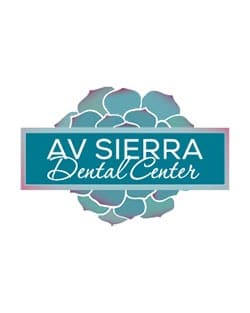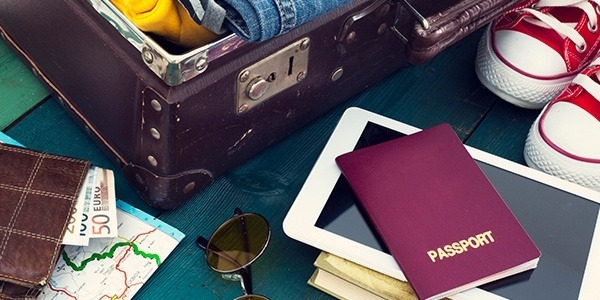Best Dental Product Series: Floss

Imagine you’re standing in the dental products aisle at your local Target or Walmart. You’re about to run out of floss at home, and you just want to pick some up. If you’re like most people, your first thought is probably something like this: Why in the world are there so many types of dental floss? Unfortunately, this can make it hard to know which product is the best. Being a dental practice, we have to tell you the truth: it doesn’t really matter a whole lot what type of floss you prefer, as long as you are actually flossing. However, that doesn’t really help you when you’re standing in the store, trying to decide between dozens of different types of dental floss. In this series of blog posts, we’ll inform you about different types of dental products, so you can choose which dental product is right for you, starting with floss. With floss, it’s important to know that there a few different types of floss on the market. Choosing the one that’s right for you can make flossing pain-free and more effective. Woven There are two types of woven floss you may hear about. The first type of woven floss is generally made of cotton. With these flosses, you can clearly see the wrapped threads, especially since they are often different colors. Cotton woven floss can be very effective in cleaning plaque, and because of the material it’s made of, can also be gentler on your gums. The second type of woven floss consists of nylon filaments threaded together to form a single, larger thread. In general, woven flosses are effective, but depending on the space between your teeth, the threads can come apart. Monofilament Monofilament floss is usually made of Teflon, and is a single thread. This means it is very durable and unable to fray like multifilament woven floss. Since Teflon has a slippery consistency, it is often much easier and more comfortable to fit between your teeth. Waxed or unwaxed? Wax helps the floss fit between your teeth more easily. Unwaxed floss squeaks, which is a benefit, because it tells you that it’s clean between your teeth. If you haven’t got a preference, try using both waxed and unwaxed floss to see which one works better and feels more comfortable for you. Dental Tape Dental tape is wider than the flosses described above. This is helpful if you have a wider gap in your teeth or dental fixtures like crowns, bridges, etc. If you have a hard time getting the dental tape in between your gums, consider changing to filament floss. Floss Threaders If you have braces, bridges, or permanent retainers, floss threaders are a must. Floss threaders have a rigid piece of string followed by a loop. You put your floss of choice in the loop, and guide the floss past your braces, bridges, or retainer. Then you can floss with the attached dental floss. This can take more time, but when braces or other fixtures are involved, flossing is even more vital in keeping your mouth healthy. If you’ve read this far, you should know that there isn’t a “best” floss out there, only what works with each person’s needs and preferences. Maintaining your oral health with good dental hygiene is important, and choosing the right floss for your needs can make a difference. If you are unsure of what floss to use, ask your dental hygienist or dentist for advice on what may work best for you.
Dental Travel Tips

Summer’s approaching fast, and with it comes road trips, family vacations, and travel plans. We’re all for travel and vacations, but just because you’re going on vacation doesn’t mean you can take a break from oral hygiene. We’re not saying you have to pack an electric toothbrush or a Waterpik® if you’re going camping for the weekend, but you should make an appropriate plan to continue caring for your teeth and gums… or else you could end up with an unpleasant souvenir from your trip: a cavity. Make it easy for yourself with travel supplies. Packing for a trip, whether a road trip or an overseas flight, is always a pain. You never have enough room for everything you want to bring, or you forget something you definitely need (like a toothbrush). Prepare ahead by having a small case or bag with all the travel necessities—toothbrush, toothpaste, floss or picks, and mouth rinse, for starters. Travel sizes aren’t the most economical way to purchase supplies, but they are convenient and ensure you can breeze through security checks at the airport. [spacer size=”20″] Ditch the toothbrush case. Sure, it might not feel good to think about your toothbrush jostling up against shampoo, soap, deodorant, and all the other items you’ve got in your toiletries bag… but it’s not as bad as sealing a wet toothbrush inside a plastic case that doubles as a bacteria breeding ground. You can always wash your toothbrush with hot water when you get where you’re going. [spacer size=”20″] Carry on your supplies. A quick brush, floss, and rinse can do wonders to help you feel refreshed on a long flight or when you get to the airport—and going carry-on will save you headaches if your luggage is delayed. But don’t obsess about it. You’ll be able to get new replacements at a drugstore almost anywhere you go. [spacer size=”20″] Stick to your routine. When traveling, it’s all too easy to get caught up in sightseeing, hiking, and dining out. In fact, that may be the entire point of some vacations. But oral hygiene is one of those things where the routine matters. Remember to brush at night before bed, in the morning after waking up, and to floss at least once a day. [spacer size=”20″] If in doubt, use bottled water. In foreign countries, especially ones that are off the beaten path, play it safe by using bottled water for your oral hygiene routine. As a rule of thumb, if you’re going to avoid drinking tap water, then avoid using it for brushing. Thankfully, in these places, most hotels will provide a complimentary bottle or two every day. [spacer size=”20″] Stick with healthy snacks. When you’re on the go, whether in the car or out sightseeing, there’s a temptation to pick up junky snacks for a quick energy boost. Avoid doing so if you can. Not only is the energy from a candy bar or bottle of soda short-lived, sugary snacks and drinks give bacteria plenty of fuel to cause tooth decay. If you do give into temptation, you’ve packed your toothbrush in carry-on for a reason. Use it. And if you like to chew gum on a plane, stick with sugar-free. [spacer size=”20″] Finally, if you’re planning a long trip, consider a check-up before you go. When your departure date gets close, it’s easy to put off routine tasks until after your vacation. If one of those tasks is your dental checkup, reconsider. If you’ve got a nagging concern, like an achy tooth, get it taken care of before your vacation. The last thing anyone wants is a full-blown toothache ruining your vacation! [spacer size=”20″] We hope you’re all set to enjoy a great summer vacation, but don’t forget to take care of your teeth when you’re traveling. If you need to set an appointment for a check-up before you go, or if your schedule is just a little bit simpler during the summer months, call or visit our website to make your next appointment today.
